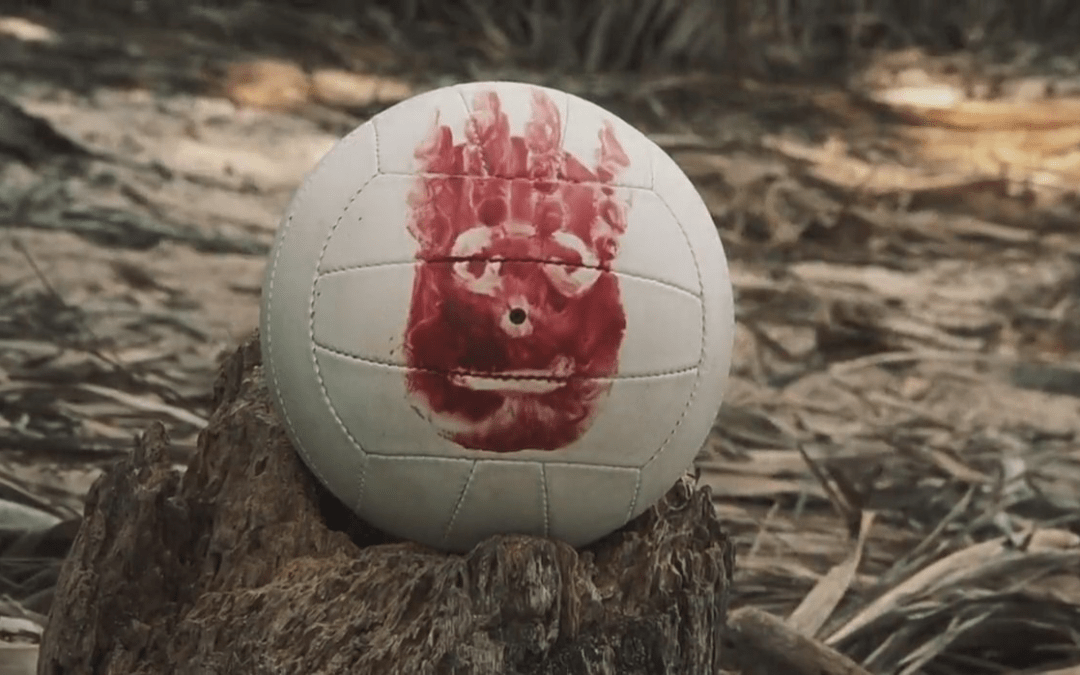By RENATA BRITO and FELIPE DANA Associated Press
FASS BOYE, Senegal (AP) — A month had passed when the first four men decided to jump.
Countless cargo ships had navigated past them, yet no one had come to their rescue. Their fuel was finished. The hunger and thirst were overwhelming. Dozens had already died, including the captain.
The voyage from the struggling Senegalese fishing town of Fass Boye to Spain’s Canary Islands, a gateway to the European Union where they hoped to find work, was supposed to take a week. But more than a month later, the wooden boat carrying 101 men and boys was getting blown further and further away from its intended destination.
No land was in sight. Yet the four men believed — or hallucinated — that they could swim to shore. To stay on the “cursed” boat, they thought, was a death sentence. They picked up empty water containers and wooden planks — anything to help them float.
And then, one by one, they leapt.
In the days that followed, dozens more would do the same before disappearing into the ocean. There were those who chose to stay in the boat and those who had no choice, no strength left to move. They withered under a deafening wind and a relentless sun.
The migrants still in the boat watched as their brothers faded. Those who died onboard were tossed into the ocean until the survivors had no energy left and bodies began accumulating.
At last, on day 36, a Spanish fishing vessel spotted them. It was Aug. 14 and they were 290 kilometers (180 miles) northeast of Cape Verde, the last cluster of islands in the eastern central Atlantic Ocean before the vast nothingness that separates West Africa from the Caribbean.
For 38 men and boys, it was salvation. For the other 63, it was too late.
___
Too often migrants disappear without a trace, without witnesses, without memory.
As the number of people leaving Senegal for Spain this year surged to record levels, The Associated Press spoke to dozens of survivors, rescuers, aid workers and officials to understand what the men endured at sea, and why, despite their traumatic experience, many are willing to risk their lives again.
Their story offers a rare chronicle of what happens to those lost on this treacherous migration route from West Africa to Europe.‘IN GOD’S HANDS’
Papa Dieye had finished his 5 p.m. prayers when he boarded a brightly painted pirogue in the coastal Senegalese town of Fass Boye. The 19-year-old fisherman made his way to the front of the large, canoe-shaped wooden boat and sat at the bow.
But Dieye wasn’t going to work that evening of July 10. This time, alongside dozens of relatives and friends, he was leaving for good.
Like other local fishermen, Dieye was struggling to survive on earnings of roughly 20,000 CFA francs ($33) a month.
“There are no fish left in the ocean,” Dieye laments.
Years of overfishing by larger industrial vessels from Europe, China and Russia had wiped out Senegalese fishermen’s livelihoods, reducing their previously abundant catch to a few small crates of fish — if they were lucky — and pushing them to take desperate measures.
As experienced seafarers, they knew well how unruly the Atlantic could be. Still, they didn’t fear the ocean. Their destiny, many say, was “in God’s hands.”
Every young man like Dieye knows someone who made it to Spain and sent back remittances to support loved ones. “We want to work to build houses for our mothers, little brothers and sisters,” he explains.
Bad omens shadowed the journey from the start. Under the collective weight of 150 people and many liters of fuel, food and water, the boat struggled to depart.
“We weren’t even sure we would take off, it was so heavy,” Dieye remembers. Dozens of latecomers were ordered to leave the boat. Then a final headcount was done: One hundred and one men and boys were on their way to Spain.
For the first few days, they sailed slowly but smoothly. They drank instant coffee and ate biscuits in the morning, couscous and water in the afternoon. They spoke of the reasons they were leaving and shared their expectations of life in Europe.
Around day five, the winds rebelled, pushing them back.
“We thought the pirogue would break,” Dieye recalls.
“In the middle of the sea, the wind made two oceans,” he says, gesturing to illustrate currents swirling in opposite directions. Unable to move forward, the captain stopped the engine several times and waited for the winds to settle. “We lost six days like this.”
Tensions on board rose. “That’s when the problems started,” explains Ngouda Boye, 30, another fisherman from Fass Boye.
Some argued they should return to Senegal. Others, including the captain, wanted to keep going.NO MORE FUEL
“When we could almost see Spain, the fuel ran out,” Dieye says. It was day 10.
“There was disappointment on all of our faces,” Boye recalls.
They improvised oars out of wooden planks and took turns rowing on and off for days. But it was pointless. The northeasterly winds controlled their fate, pushing them away from their destination.
Back in Fass Boye, relatives were beginning to grow anxious. The 1,500-kilometer voyage from Senegal to the Canaries normally takes a week. Ten days later, they had no news.
Families and migration activists began asking authorities in both Spain and Senegal to launch search-and-rescue missions. The brother of one migrant who lived in Spain filed a missing-person notice with police.
Their boat, like so many that left Senegal this year, had taken a longer and more dangerous route in an attempt to evade authorities patrolling the West African coast. That risky strategy has proved successful for many: Migrant arrivals to the Canaries hit a record 36,000 people this year, more than double the previous year.
For others, the migration journey has ended in tragedy. While accurate figures on the number of deaths do not exist, entire boats have gone missing in the Atlantic, becoming what are known as “invisible shipwrecks.” When bodies do wash ashore, they are often buried in unmarked graves.
Spanish authorities routinely fly over a massive area of the Atlantic between West Africa and the Canary Islands looking for lost migrants. But the vast distances, volatile weather conditions and relatively small boats mean they are easily missed.
“Imagine looking for a car in an area that’s 1.5 times the size of mainland Spain,” says Manuel Barroso, who heads the national coordination center of Spain’s Maritime Rescue Service. “We may even fly right over one, but because of the clouds, we cannot see it.”
The men on the pirogue were lost. But they were not alone.
Massive cargo ships passed them by almost every day, destabilizing the shaky wooden boat in their wakes. Yet no one came to their rescue.
“When we saw them, we yelled until we had no more strength,” Dieye recalls.
Every time they spotted a ship, they would gather their belongings, expecting to be saved, only to realize moments later that the ships weren’t coming for them. Boye remembers the Spanish, Russian and Brazilian flags that some commercial vessels flew.
Fernando Ncula, another survivor, remembers a Chinese boat that almost crushed them. He saw people on deck watching them.
“I couldn’t believe it. I thought to myself, why didn’t they help us?” Ncula still wonders.
Under international law, captains are required “to render assistance to any person found at sea in danger of being lost.” But the law is hard to enforce.
For years, European leaders have fought over who should take responsibility for migrants rescued at sea. The result: numerous standoffs, with merchant ships sometimes caught in the middle. Unlike in the Mediterranean, no humanitarian boats or planes monitor this vast expanse of the Atlantic Ocean. Migrants are left to their own luck.THE FIRST DEATH
It didn’t take long after they ran out of fuel for passengers to start pointing fingers at the captain. Unlike most of the others, he was not a native of Fass Boye; he came from another Senegalese fishing town called Joal.
The migrants grew increasingly angry at the captain’s failure to get them to their destination. To make matters worse, he started behaving strangely, in ways that scared them.
The captain threatened to “abandon us,” Dieye says. When they suggested turning back, “he insisted, ‘No, only Spain!’”
“He did things like a sorcerer. He spoke gibberish,” Dieye recounts. Belief in witchcraft and the power of curses is strong across West Africa. It’s possible the captain was hallucinating, but some on board believed he was possessed by evil spirits.
“Finally, they tied him up,” Dieye says.
“He was the first to die.”
Dieye says he did not know the captain’s name or the name of those who assaulted him. Ncula also recalled seeing the captain assaulted and tied up by others on board. After that, the captain “disappeared.”
A third survivor, Moustafa Diallo, 28, confirms the captain was the first to die, days before anyone else.SURVIVAL
Into their third week, the men ran out of water.
Dieye and others diluted the last few bottles of drinking water with seawater to make it last longer. But that quickly finished too. There was nothing for them left but the ocean.
“Seawater is not easy to drink,” says Bathie Gaye, a 31-year-old survivor from Diogo Sur Mer in Senegal. “Every time I drank it, I threw up.”
Saltwater is harmful to the kidneys and causes even more dehydration. Those who tried to quench their thirst with it ended up dying. Those who took only tiny sips survived.
At times they’d warm the seawater and add some instant coffee or leftover biscuit crumbs that they had carefully rationed.
The hunger tortured them as much as the thirst. Dieye remembers the pain from his protruding ribs when he sat. With a small net, they tried to catch fish. But it wasn’t enough. More people died.
One day, turtles appeared around their boat. Ravenous and desperate, two men jumped in to catch them, Dieye says. Only one succeeded and returned with the catch while the other struggled to swim back. They threw him a rope, but the wind blew it the other way.
“He swam until we couldn’t see him anymore,” Dieye says.
Boye remembers it differently: that they caught the turtle from inside the boat. In any case, the turtle meat only made them vomit, further weakening them, pushing them closer to death.
“Sometimes I sat at the ledge of the pirogue,” Gaye recalls, “so if I died, I wouldn’t have to tire the others — they could just push me over.”AN OUTSIDER ON BOARD
Ncula, a 22-year-old seasonal farm worker from Guinea-Bissau, had been trying to save money by working in the fields of Fass Boye before he boarded the doomed pirogue. But the 150,000 CFA francs — about $250 — that he earned over several months wasn’t enough to support his younger siblings.
When the opportunity to board a boat to Spain came up, he asked his older brother to sell the family cows back home to help him pay the 400,000 CFA ($665) for a spot, close to what he would earn in a year. The family saw it as an investment.
Ncula and another friend from Guinea-Bissau, Sadja Mané, were the only two foreigners on board. Ncula didn’t speak Wolof, Senegal’s most widely spoken language, which most of the men on the boat used to converse. So he stuck close to Mané, who had lived in Senegal for years and could translate.
Eventually, Mané succumbed to thirst and hunger. He died around day 25, his friend recalls.
Even then, Ncula stayed next to his body. If they were rescued, he thought, he would bury Mané.
But when Ncula opened his eyes the next morning, his friend’s body was gone. Others had thrown it in the ocean. He became terrified he would be thrown overboard, too.
“I couldn’t sleep because I was so scared,” Ncula says.
He worried someone would kill him in a moment of anger or desperation. He stayed in his corner, trying to survive as discreetly as he could. He was, after all, the last remaining outsider on board.
Eventually, attention turned to him.
“Why are you not tired like the rest of us?” Ncula remembers being interrogated, even though he was sure he was just as exhausted, dehydrated and hungry as everyone else. Did they think he, too, was cursed?
“They tied me up around my chest. They tied me around my neck. They tied me around my feet,” Ncula recalls. At the time of the interview, he still had scars on his back and chest. His feet were swollen. His joints hurt.
Ncula says he was tied up for two days wearing nothing but his boxer shorts. Unable to move, and without food or water, he fell in and out of consciousness. Finally, an older man on board took pity on him and cut him loose. His savior eventually died too, Ncula says.
The other survivors neither confirm nor deny that Ncula was tied up. Some say it was hard to see and remember everything, and hard to distinguish between reality and hallucinations.HOPELESSNESS
The days were long, hot and punishing. They soaked their clothes with seawater to cool off, but “a few minutes later, they were dry,” Dieye recalls.
The nights were worse. In the darkness, the howling of the wind was interrupted by cries, screams and gagging of those suffering onboard.
“There comes a moment when you cannot even think of anyone else,” Dieye says. “You think about yourself, and you prepare to die.”
Death seemed inevitable; waiting for it was unbearable. As they reached the one-month mark, people started to jump in a desperate attempt to swim to safety, or perhaps to put themselves out of misery.
First, it was four. A day or two later, another 10. Then another dozen.
“When we counted how many people had jumped, it was more than 30,” Dieye says.
“They were swimming, saying: ‘I’m getting out! I’m getting out!’” Ncula recalls. “I just sat there because I had no strength left.”
Those who remained aboard watched anxiously as the swimmers disappeared on the horizon.
Some sank right in front of them.
At that point, Gaye believes, many had “lost their minds.”LIGHTS IN THE SKY
Two nights after the last men jumped, lights appeared in the sky. Those awake quickly turned on their smartphones and activated the devices’ flashlights, waving them in the air. Lacking cell reception in the middle of the ocean, they had kept their phones off during the voyage to save battery.
Nothing happened at first. They were being ignored, again — or so they thought.
On the other side of the lights was the Zillarri, a Belize-flagged, Spanish-owned tuna fishing support vessel.
Abdou Aziz Niang, a Senegalese mechanic working on the ship, was almost asleep when one of the deckhands called him up. There’s a pirogue over there, he told him. “That’s impossible. It’s too far out,” Niang replied.
As the sun rose, crew members raised their binoculars again. It was indeed a pirogue, and there were people on board.
“They were so skinny. I saw their eyes and teeth and only bones,” Niang remembers. Niang urged the captain to go faster.
Back on the pirogue, Dieye was washing his face when he saw the Zillarri approaching them.
“What are you doing here?” Niang, the Senegalese crew member, shouted at them in Wolof.
“We left Senegal, but we had problems,” the men replied.
“How long have you been here?” Niang asked.
It had been 36 days.
Now these men — who were fleeing for Europe because industrial overfishing had made their livelihoods untenable — were being rescued by a European fishing vessel.
The Zillarri circled the migrants and the crew threw bottles of water. Survivors scrambled to catch them.
Following protocol, the Spanish captain alerted Spain’s Maritime Rescue Coordination Center about the migrants in distress and shared their coordinates. Meanwhile, Niang called the Senegalese navy. Hours passed as authorities in Spain, Cape Verde and Senegal communicated, and the captain waited for instructions. In that time, Niang witnessed more people dying on board.
Finally, the ship received instructions: Take the rescued people to the closest port, Palmeira, on the island of Sal in Cape Verde, 290 kilometers (180 miles) away.
The crew tied ropes to the boat and began towing it to shore.
Suddenly, the pirogue, rotting from its long journey at sea, started breaking apart. Towing it wouldn’t work, so the Spanish boat began reeling in the pirogue and pulling survivors onto the Zillarri. Next came the task of recovering the bodies of the dead.
Despite their efforts, one of the rescued — a teenage boy — died before they made it to shore. He lay stiff next to the others, his eyes and mouth open. Niang poked him and realized the boy wasn’t waking up. “He died just now, it’s unbelievable!” Niang cried out in a cell phone video he recorded at the scene.
Survivors were laid out across the deck on top of fishing nets and given food and water. The crew covered them with blue tarpaulins. Barely able to move, some in shock from the ordeal, they huddled together overnight.
When they arrived the next morning in Palmeira, uniformed soldiers and Red Cross volunteers helped the 38 survivors wobble off the Zillarri. Some had to be carried on stretchers. Under a tent, paramedics hooked them up to IV fluids. A few were hospitalized. They were skin and bones.
With the help of a crane and a fishing net, the crew of the Zillarri lifted a bundle of bodies from the top deck and transferred them onto the asphalt. They would later be identified as the remains of Amsa Sarr, Ndiaga Diop, Pape Mboro, Maguette Dieye, Bogal Thiam, Adama Sall and Pape Sow.
Of the 63 who died during the harrowing journey, only those seven were recovered and buried in Cape Verde. The rest of the dead would remain in the Atlantic.
The survivors couldn’t celebrate. They were alive, yes. But at what cost? Relatives had invested in their journey to Europe, selling possessions to pay for their trip, hoping the young men would get jobs and send money back home. Instead, they were back at square one. They would return with empty hands and terrible news. How would they announce the loss of so many brothers? Who would support the parents, widows and children of the deceased?
As they awaited repatriation to Senegal, the migrants, including minors, were locked up by authorities inside a school. For a week, they slept on mattresses on the floor.
In the classroom-turned-cafeteria, survivors passed one of the volunteer’s cellphones from hand to hand across three long dining tables. They sobbed and took deep, shaky breaths as they watched a video shared on WhatsApp by one of their relatives back home; it was a slideshow of those who died, set to melancholy Senegalese music.GOING HOME
Survivors were taken back to Dakar on Aug. 21 aboard a military plane; each was given 25,000 CFA francs ($40) and sent home.
Their case made international headlines and sparked debate on Senegalese television over the cost of “clandestine migration.” A generation of young men, and some women and children too, were dying at sea or capsizing along the northwest African coast.
Even as their story spread, thousands more migrants were boarding boats to the Canary Islands. Senegalese pirogues, sometimes packed with as many as 300 people, continued to depart.
Once a beacon of democratic stability in West Africa, Senegal was rocked by violent anti-government protests earlier this year. Many of those leaving the country blame President Macky Sall for their economic woes and accuse his government of “selling” their seas to foreign companies.
“If (the Senegalese government) helped us, the children wouldn’t leave,” says Gotte Kandji, father of 16-year-old Mor Kandji, one of Gotte’s 27 children, who was among the survivors.
“We don’t have a road here, we don’t have electricity, we don’t have hospitals or health centers,” Gotte said from his home in Diogo Sur Mer. “We’re fed up.”
His two eldest sons made the risky journey to the Canary Islands nearly two decades ago, when they were teenagers. One even became a Spanish citizen. Mor dreamed of a successful life in Spain like his brothers.
Senegalese authorities have in the past prosecuted parents who helped their children leave. Kandji insists he had no role in his son’s failed migration attempt: “All Senegalese must look at this voyage, so they don’t repeat it.”
Yet just two months after Mor returned home, four of Kandji’s older sons boarded boats to the Canaries. Mor is now his only son left at home. How long he’ll remain there is unclear.
Without jobs, the 38 survivors are back where they started. They don’t see any future in Senegal and are still looking for ways out — even if that means gambling their lives in the Atlantic again.
Among them is Boye, one of the fishermen who survived, who is struggling to support his family. On one hand, boarding another boat could leave his wife a widow and his two children fatherless. But if he makes it and finds work in Europe, he could send enough money home to build them a house.
“When you have no work, nothing to do,” Boye says, “it’s better to leave and try your luck.”
___
Associated Press journalists Ndeye Sene Mbengue and Zane Irwin contributed to this report.







